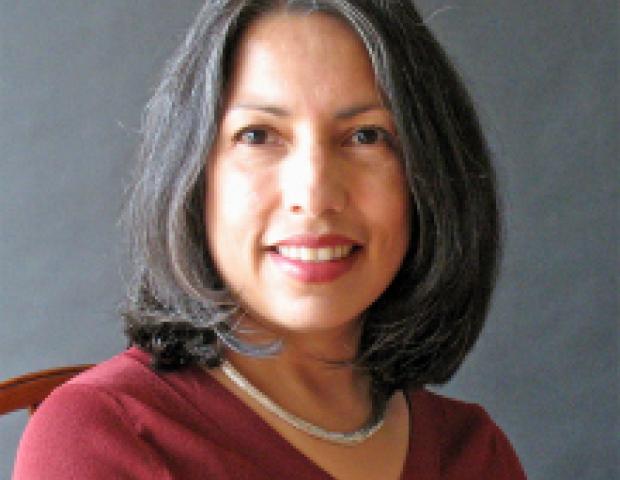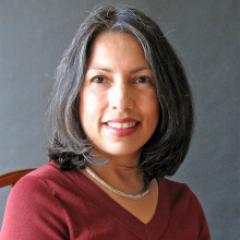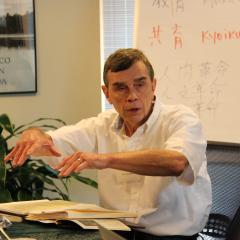Isabel Nuñez on the Meaning of Hope and Joy in Education
Photo by Donald Ohlinger
Isabel Nuñez is professor of educational studies and director of the School of Education at Purdue University Fort Wayne, and co-editor, with Jason Goulah, of Hope and Joy in Education: Engaging Daisaku Ikeda Across Curriculum and Context. The book was published by Teachers College Press in April of 2021 and developed in collaboration with the Ikeda Center. In July, just a few months after the book’s release, Ikeda Center Publications Associate Mitch Bogen checked in with Dr. Nuñez to get her impressions on what the book and topic mean to her now that the frenzy of preparing this ambitious multi-author volume for publication had passed and she had had some time to live with and reflect on it for a while.
What kind of reactions have you gotten from people when you tell them your latest book project is on hope and joy in education?
It depends on how well they know me! Close friends and colleagues nod knowingly and say something like, “That’s your thing, right?” because they’ve all heard me talk about the joy of the profession to the students and faculty of the School of Education, friends and family, strangers at parties, and whoever else will listen! If they are strangers at parties, they also nod, but with a forehead scrunch of concern, and say something like, “Yeah, that’s really needed right now.” Then we’ll go on to talk about how hard the pandemic has been on teachers.
What would you say to someone who argues that the events of the last year and a half have changed everything, and that we don’t have time for hope and joy now?
I would agree that the world is indeed a very different place now. We have suffered much pain and loss, and happiness has gotten more difficult to find and to hold onto. However, I would also argue that, because of these changes, we need hope and joy more than ever right now. While there have always been challenges in life, this time is unique in that the entire globe, quite literally all of humanity has shared the experience of the COVID-19 pandemic. It is a crisis that has touched all of us. The possibility that this shared experience might bring us closer together as a human race is reason to hope.
How did you come to value hope and joy in your own life and work?
This is something I wrote about in my chapter, so I risk repeating myself here! Joy was a decision for me after a difficult period of disillusionment sparked by learning about U.S. foreign policy during my college years. After several months of what I now look back on as a period of grief for the nation/home I thought I knew, I decided that I needed to be happy, and that I could do the work of fighting injustice even while enjoying all that is good about life. It would be decades before I’d read Daisaku Ikeda’s Hope is a Decision, but it resonated deeply when I did.
Did your understanding of hope and joy in education change in the process of editing and contributing to the book? How so?
My understanding of our topic in education did change while working on the book! While all of the authors engaged hope and joy in their chapters, many of them did so while also confronting very painful phenomena unflinchingly. From neoliberalism to nuclear war, racism to illness and death, the essays we collected address the most challenging aspects of the human experience, but still find their way to hope and joy. They have led me to consider whether I need to spend more time with sorrow, perhaps even anger, and not seek to move so quickly to joy.
Give me three words that describe our authors. Why these?
Courageous. Reflective. Generous. As I noted above, the authors are unflinching in their willingness to discuss the most difficult of topics. They are also personally brave in the extent to which they are willing to be vulnerable in their essays, writing about their own challenges as educators and as people. Doing so is incredibly generous; in the book, they are sharing the gift of wisdom and insight gained through not only their hard work as scholars, but through their experience of life.
Give me three words to describe Daisaku Ikeda’s philosophy. Why these?
Accessible. Relevant. Revolutionary. The words I’ve chosen most likely say more about me than they do Daisaku Ikeda, but these words feel like guideposts for the journey I’ve taken with his work. What I most appreciate is that Ikeda takes deep and complex concepts from Buddhism and translates them into language that is easily understood. This clarifies their immediate applicability to everyday life—as well as to the larger philosophical questions about life and its meaning. Because the ideas are made so simple to put into practice, their effect is transformative to that single human life (mine), which, as Ikeda has explained, is the necessary first step to changing the world.
How does Ikeda’s philosophy fit into existing trends or streams in US education, and what does he bring that’s unique?
Ikeda’s philosophy on inner transformation has some parallels to the field of social emotional learning. These are connections that Deborah Donahue-Keegan explores in her contribution to the book. However, the potential resonances are limited by the hesitance of mainstream U.S. education to engage spirituality. I suspect that a reluctance to go anywhere near the boundary between church and state keeps us from acknowledging that human beings grow and develop in soul and spirit as well as in mind and body. Ikeda’s philosophy envisions an education for individual and collective human flourishing, rather than workforce preparation.
What signs do you see that the field of education is poised for a rebirth of hope and joy?
Interestingly, I feel like hope and joy are being reborn in the field as teachers and students return to school in person as we begin our collective recovery from the pandemic. We missed each other, missed learning in community, and the opportunity to be with others again is already renewing our hope and joy. I can see this happening as my colleagues return to work in the School of Education—and the office suite isn’t nearly as fun as the classroom is!




